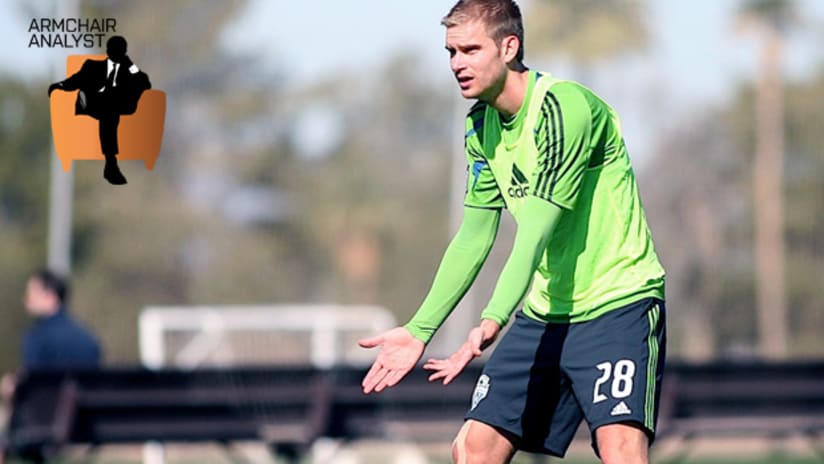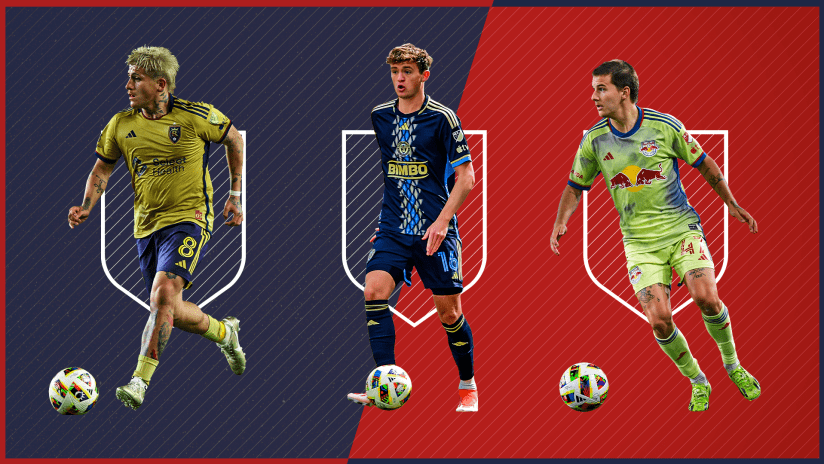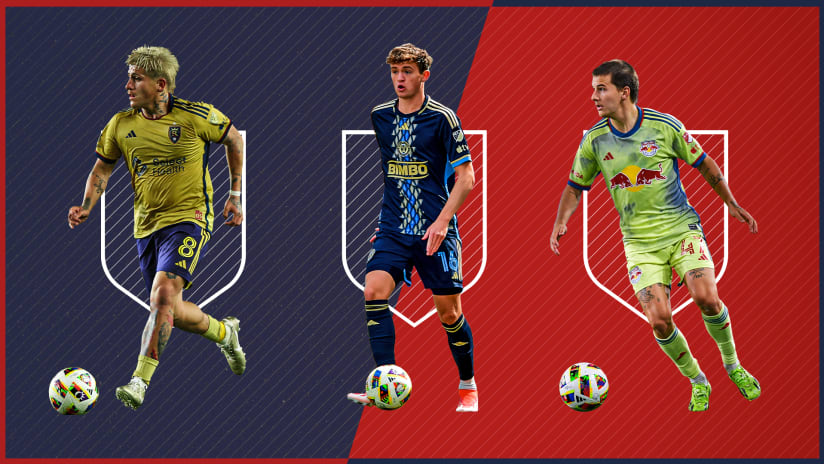A few weeks ago, a reader sent me an e-mail that basically boiled down to one thing: Why are we seeing such an influx of foreign talent this offseason?
It’s a question that’s been on the mind of a lot of folks, and deserves an answer by more than just e-mail.
First, there’s no doubt that MLS, at the moment, is skewing more foreign. In 2010 and 2011, American players played about 55 percent of available minutes, a record low for any two-year period. North of the border, none of the three Canadian teams have a particularly strong Canuck flavor – Montreal have only two Canadians on their roster at the moment – and South Americans are arriving, seemingly by the truckload, at BMO Field, the Home Depot Center, Gillette Stadium and all stops in between.
The New York Red Bulls set a league record last year by handing just 26 percent of their minutes to American players, a number that looks to take a nosedive with the departure of Tim Ream, and with Stephen Keel likely to find himself a backup once more. (Unlike the rest of MLS, though, RBNY have relatively few imports from South America – it’s Scandinavia that they’re raiding. We’ll get back to that in a bit).
As it stands, it’s quite possible that the Red Bulls could be the first club in MLS history to feature an all-foreign First XI, depending upon what they decide for their ‘keeper slot.
On the other coast, Seattle will be representing MLS next month with, at best, three Americans in the starting lineup. If Sigi Schmid decides to go with Álvaro Fernández in the middle in order to open up the flank for Christian Silvebaek, that number will drop to two. Or down to one if Sammy Ochoa doesn’t win the No. 9 shirt.
It’s fairly stark. But it does not mean that MLS has put the development of American and Canadian talent on the back-burner.
What it means is that MLS has reversed one of the more worrying trends of the middle of the last decade: the egress of talent to “middle-tier” European leagues like Sweden, Denmark and Greece.
There’s an almost across-the-board acceptance that players like Ream – or if we want to track back far enough, Clint Dempsey – are going to want to test themselves in the English Premier League or La Liga or the Bundesliga, should they come calling. The likes of Landon Donovan and Julian de Guzman, guys who could have played anywhere but chose to stay here and build MLS, are few and far between.
Emotionally, fans were and are mostly able to deal with those kinds of losses. The prevailing sentiment among the RBNY fanbase two weeks ago was “Good luck, Tim.” Everyone understands it’s part of the sport.
It was much, much tougher, though, seeing the likes of Michael Parkhurst or Chris Rolfe seek greener pastures in leagues that are somewhat less than elite.
But things have changed. Five years ago, Hernán Pertúz, a 22-year-old central defender who has captained the Colombian U-20 and U-23 teams, wouldn’t have gone from Independiente Medellín to FC Dallas. He’d have gone to Brøndby or Rosenborg or AEK Athens.
Dilly Duka talks openly about playing in “the best leagues in Europe” someday – and judging by the murmurs about him in the international scouting community following this winter’s Generation adidas trip, “someday” may be coming fairly soon – and admits he turned down multiple offers from Euro sides coming out of college. Instead, he wanted to play in MLS because being here gave him the best chance to improve as a player, to learn to win and lead, and eventually realize his dream.
But the biggest indicator is what’s happened with Markus Holgersson, or Kris Boyd, or Hamdi Salihi. These are guys on the right side of 30 who are, to one degree or another, in their national team pool and are hoping to stay there.
And this year, their choice is MLS. It would not have been in 2006.
With that kind of talent coming in, it means fewer spots for American and Canadian players on many game day rosters. As a result, young domestic players like Corben Bone or Russell Teibert have been somewhat marginalized (not to pick on Chicago or Vancouver – both teams have their reasons) as they’ve tried to make the adjustment to the league.
It’s all part of the process. MLS had to overtake the Scandinavian leagues in terms of onfield quality, and relying on college players while the Development Academy system is just getting started simply wasn’t going to do it. There have to be imports to keep the quality up.
That’s a trend that probably won’t change until the first group of academy kids is ready to make the league their own. D.C. United are off to a particularly good start with Bill Hamid, Ethan White and – somewhat ironically, given the nature of this column – Andy Najar as regular starters. Right now, however, they’re the exception, not the rule.
Elsewhere, it’ll take longer, and MLS will have a very foreign flavor for the foreseeable future. It’s conceivable that American and Canadian players log less than 50 percent of available minutes this year.
But before we go all jingoistic, think about this: In last November’s MLS Cup final, 16 of the 22 players who took the field at kick-off were American or Canadian. And just this week, Bruce Arena happily traded an international slot for Kyle Nakazawa and a second-round pick in next year’s SuperDraft.
So there will always be a place for American and Canadian talent, even with the best teams on offer. No matter how far the numbers skew over the next few years, MLS will still be a North American league.
The foreign flavor has simply made it better.
Matthew Doyle writes the Armchair Analyst column for MLSsoccer.com















